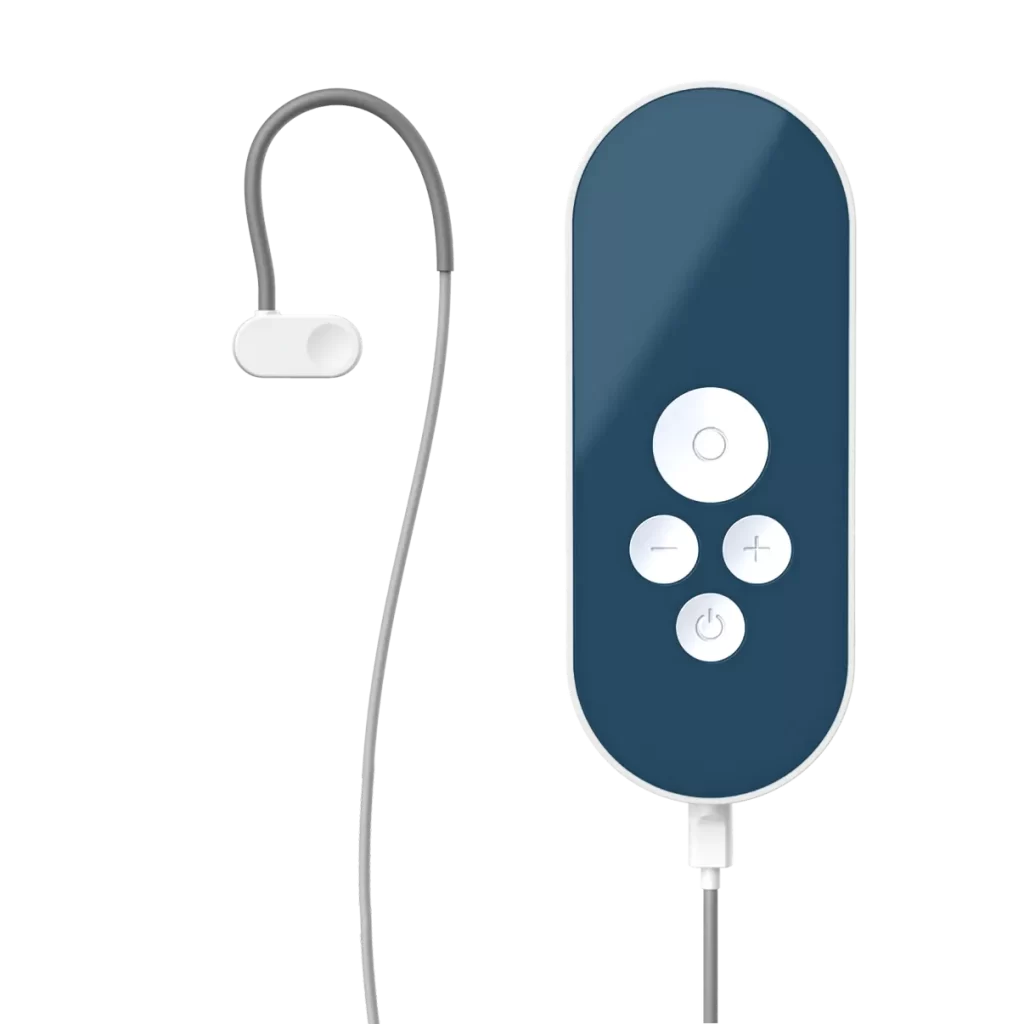A plain-English guide to burnout’s high-idle state—and a practical daily reset.

You already know burnout isn’t just “being tired.”
It’s waking up unrefreshed. It’s dragging through tasks you used to finish with ease.
It’s staring at a screen and feeling… nothing.
It’s guilt for snapping at people you love.
It’s the quiet fear that this stuck, foggy version of you is here to stay.
If that sounds familiar, breathe.
Burnout isn’t a personal failure.
It’s a sign your nervous system has been pinned in survival mode for too long.
When that happens, everything from sleep to digestion to focus goes sideways — even if you’re “doing everything right.”
This page gives you two things:
- A simple, science-based explanation of what’s actually happening (in plain English).
- Practical steps you can use today — plus a daily reset thousands are adding to their routine to feel like themselves again.
Let’s start with what burnout is really doing behind the scenes.
#1. Your stress “idle” is stuck on high

Ever sit on the couch and still feel revved up inside?
That’s your alert system stuck in a high-idle, the stress throttle slightly open even when you’re at a red light. Like a car fuel burns, parts wear out, and you don’t go anywhere.
What helps now: Try a “longer exhale” drill: inhale softly through the nose for 4, exhale for 6. Do it for 3 minutes before bed or between tasks.
Longer exhales signal safety.
You’re telling your body: we can downshift.
#2. Your sleep isn’t actually restorative

Burnout can fragment sleep, so you clock the hours but miss the depth. You wake heavy, foggy, and oddly wired.
Quick wins tonight:
- Keep the same wind-down time, even on weekends.
- Dim lights 60 minutes before bed; screens off 30 minutes before.
- In bed, try box breathing (4-4-4-4) for two minutes.
- Tomorrow morning, get daylight in your eyes within 30 minutes of waking. It anchors your body clock.
#3. Micro-inflammation hums in the background

That low-grade, “everything aches” feeling?
Chronic stress keeps inflammatory signals quietly elevated.
You’re not imagining that tight neck or sore lower back.
Ease the load during the day: Insert two 5-minute “parasympathetic breaks.”
Stand up.
Slow exhale.
Sip water.
Walk to the window.
These tiny resets seem trivial; they compound.
#4. Your recovery capacity (HRV) is flat

Heart-rate variability (HRV) is a simple way to think about your resilience.
High HRV = flexible, adaptable.
Low HRV = stuck in one gear. Burnout blunts HRV, so little things knock you over.
A 10-minute afternoon ritual: Sit somewhere quiet after lunch.
Breathe through the nose, slow and light.
No music, no phone.
It’s not a moral victory; it’s training your recovery system to respond again.
#5. The gut-brain line is jammed

Your vagus nerve helps coordinate digestion.
When stress dominates, your gut gets jumpy: bloating, cramps, random “trigger foods,” heavy meals that feel heavier.
At meals: For the first five bites, set your fork down between each bite.
Chew longer than feels normal.
It sounds silly. It tells your gut, we’re safe.
Digestion improves when your body believes you’re not running from a threat.
#6. Focus and working memory shrink

Burnout steals bandwidth.
Multitasking becomes multi-starting.
You click between tabs, reread the same sentence, forget why you opened the document in the first place.
Make focus easy again:
Set a 20-minute timer for one task.
Close other tabs.
Put your phone in another room.
Stop when the timer ends — even if you’re rolling. You’re rebuilding trust with your brain: we start and complete small chunks here.
#7. The deeper root: a dysregulated nervous system

Here’s the bit few people are told: when your nervous system is dysregulated, you experience tiredness, anxious thoughts, brain fog, poor sleep, and slower recovery — often all at once.
You can’t ‘mindset’ your way out of a body running on an emergency setting.
You have to reteach the system to downshift.
That’s why advice like “just push through,” “treat yourself,” or even “take a week off” often falls flat.
Burnout isn’t a light switch you flip; it’s a system you retrain.
So… how do you retrain it?
Think of this like gentle physical therapy for your nervous system.
Small, consistent inputs pull you out of a high-idle stress state and back into your body’s calm-and-restore setting.
There’s also a daily reset more people are adding because it integrates seamlessly into real life:
Meet Nuropod

What it is: A small, non-invasive device that gently stimulates the auricular branch of the vagus nerve using a comfortable ear clip on the tragus.
Sessions are typically 30–60 minutes, once or twice a day.
You can read, plan, or relax while it works.
Your vagus nerve is the body’s brake pedal.
Your vagus nerve is your built-in downshift.
Nuropod’s precise micro-pulses on the ear help that downshift engage, moving you out of stress overdrive and into a recovery state.
It’s not a jolt.
Most people describe the sensation as a light, soothing tingle — and many notice a calm settling in during the session.
Why people like it for burnout-type symptoms:
- It’s drug-free and non-invasive. No gels. No downtime.
- It’s scientifically tested and used in real-world settings.
- It fits into your life. Clip in. Press start. Get on with your day.
What users commonly report over time:
- During sessions: a noticeable calming effect — like the volume knob turning down.
- In the first weeks: sleep quality improves; mornings feel less like a brick wall.
- With consistency: steadier energy, clearer focus, fewer “overwhelm spikes.”
What a routine can look like (example):
- Morning: 30 minutes while you check email or plan your day.
- Evening: Optional 30 minutes while reading or watching a show.
- Layer in the simple drills above (long exhales, meal pacing) for extra traction.
“I’ve tried everything. Why would this be different?”
Fair question. A few quick answers, straight:
“Is it safe?”
Nuropod uses non-invasive, targeted stimulation on the ear’s tragus — the same approach used in scientific research. It’s designed for everyday use.
“I’m skeptical of gadgets.”
Healthy. You should be. The difference here is what it targets: not a random “hack,” but the control pathway that governs your body’s stress-vs-recovery balance.
“Will I actually stick with it?”
Pair sessions with things you already do (morning planning, evening reading).
Habit design > willpower.
Most people find it becomes the most peaceful 30 minutes of their day.
“How fast will I feel something?”
Some notice the calming effect during use. Deeper benefits build with consistency. Think training, not magic.
Put this all together — and picture the difference
Imagine waking and not bargaining with the alarm.You make coffee because you enjoy it, not to survive.
Your inbox doesn’t spike your pulse. You move through tasks in sane chunks.
Your shoulders aren’t up by your ears at 4 p.m.
Dinner doesn’t sit like a rock.
By evening you’re actually present — for your partner, your kids, your own thoughts.
And when you get into bed, your brain doesn’t start a 2 a.m. meeting. You sleep. You wake clearer. You’re back in control.
That’s the point of everything on this page. Not to make you superhuman.
To help you feel like yourself again.
Your next step (keep it simple)
- Choose one micro-reset from the list and do it today. Longer exhales. A 10-minute noon pause. Five slow bites. One 20-minute focus sprint.
- Consider adding Nuropod as your daily nervous-system reset. Clip. Press start. Let your body re-learn calm while you get on with life.
Burnout doesn’t need more willpower from you. It needs better signals to your system — consistent, gentle, and doable.
See how Nuropod supports calmer days, clearer focus, and better sleep.
Learn how it works and check availability today.
We’re so confident you’ll notice a difference that every device comes with a 30-day money-back guarantee. Use it daily, see how your clarity, energy, and sleep respond — and if you’re not satisfied, simply return it for a full refund. No questions asked, no hassle.
The article does not in any way constitute as medical advice. Please seek consultation with a licensed medical professional before starting any treatment. This website may receive commissions from the links or products mentioned in this article.
Share via:


